|
The Family of Saint Sharbel is happy to share with you a short video about St Sharbel by Bobby Angel: St. Charbel, the “Miracle Monk of Lebanon”, from Ascension (Press).
0 Comments
On July 17, The Maronite Church celebrates the feast of Saint Marina.
As a monk she was known by the name Marinos. Although young, Marinos occupied himself with the practice of monastic virtues with utmost spirit and minuteness. He was silent and reticent with bowed head and eyes, making of his cowl a veil concealing the features of his face and eyes.
One day he was sent to a neighboring town on a mission for the Monastery. He was obliged to spend the night at the house of a friend of the monks named Paphnotius. Paphnotius had a young girl who had fallen into adultery and was found pregnant. Upon finding out, her father was enraged and demanded the name of the perpetrator. His daughter told him that Marinos the Monk had raped her the night he spent in their house. Her father went straight to the Monastery and told the Superior, who was surprised for he knew that Marinos is a pious and pure man. The Superior called Marinos and scolded him, but Marinos said nothing to defend himself. Consequently, the Superior was very perplexed and considered Marinos’ silence to be an admission of guilt. He then sentenced Marinos to dismissal and to be thrown outside the Monastery. Marinos resigned himself to the will of God and stayed at the door of the Monastery praying and crying, living off the leftovers of the monks’ food. His father had long since died. When the daughter delivered, the grandfather brought the child, a boy, to the Monastery and threw him to Marinos saying: “take and raise your son.” Marinos took the boy and began raising him with what the monks used to bring to him of goat milk and of leftovers from their table. This situation lasted four years. Marinos carried the shame of this hideous accusation without any complaints. However, the Superior had compassion for him and let him enter the Monastery under very strict conditions. Marinos accepted while shedding the tears of repentance. Marinos persevered in his ascetic work until the hour of his death when the features of his face glowed with a heavenly light. He asked forgiveness from all and he forgave all those who sinned against him. He then gave up his spirit. The Superior then ordered that his body be prepared for burial outside the Monastery. It was a great moment of astonishment when the monks found that Marinos was a woman and not a man. The Superior and the monks fell on their knees before the pure cadaver, asking God and the soul of the holy saint forgiveness. As for the father of the sinful daughter, he was ashamed and came to make his statement before everyone. As for the daughter, she spent her life crying and repenting at the tomb of the saint. The sanctity of Marina spread all over Lebanon, people from all its regions came to the Monastery of Qannoubine to be blessed by her body. Her tomb became a source of cures and graces." (Daher 1996: 189-190) This account on the life, legend, and relics of Saint Marina the Monk tells us but little about her passion, suffering, and humiliation. The Maronites remain to this day fascinated by this Saint. Among them, there is almost a righteous anger against the injustice that was done to her. To this day, her name is intertwined with that of the Monastery of Qannoubine and her nearby grotto is a reminder of her chastity, obedience, asceticism, humility, forgiveness, and sainthood.
On July 9th, 1860 a fire broke out through the Christian area of Damascus. Many Maronite families took refuge in a Franciscan monastery along with the Massabki brothers and the Superior, Father Emmanuel. )Father Emmanuel closed the Monastery and called everyone to the church where they prayed and made their confession and received communion. While everyone took refuge on the roof, Francis one of the Massabki brothers remained kneeling at the feet of the Sorrowful Mother. Moments later the church was attacked, The Superior Father was captured and told the attackers that he would lead them to the treasure inside the church. He proceeded to the altar, where he lit the candles and took out the Eucharist from the tabernacle. Father Emmanuel was then put to death.
The attackers then noticed Francis kneeling in prayer and recognized him. They told him that the Sheikh had sent them to save him and his family from death on the condition that he deny his faith and convert. Francis answered them, "Sheikh Abdullah can take my money, he can also take my life; but my faith no one can make me deny. I am a Christian and in the faith of Christ, I will die." Francis was then put to death. The attackers then confronted Abdel El –Maoti in the convent yard and also asked him to renounce his faith to escape death; He refused and was also martyred. Raphael, who was hiding inside the convent was offered the same as his brothers, but also refused and was also martyred. According to witnesses, the three Massabki brothers were buried in the convent along with the eight martyr priests and others who had sought refuge there. On October 7, 1926, His Holiness Pius XI proclaimed the beatification of the three brothers. The Massabki brothers are great role models for Maronite families. Although they were rather wealthy, they remained faithful and humble. We pray, that these great Maronites will soon be recognized amongst our Maronite Saints. We ask for their intercession to help us live our lives as honest Christians, and we pray for all those who are being persecuted around the world. May they find refuge and comfort in you Lord. Amen. (From: Living Maronites) Christ in the Wilderness by Ivan Kramskoy, 1872 The first season, Cana Sunday to Hosanna or Palm Sunday, Great Lent, is a preparation for the feast of the Resurrection of the Lord, and the second, the Season of Resurrection, unfolds before us, over a period of fifty days, the meaning and joy of the Resurrection of the Lord. The feast of the Resurrection is thus the center and pivotal point of this whole liturgical season, as well as the whole liturgical year. According to the ancient Antiochene (Church of Antioch) tradition, the Sundays of Great Lent commemorate the gestures of mercy of the Savior towards his people, which were, at the same time, as Saint John says, "the signs urging the faith." During Lent we journey to that safe harbor guarded by the glorious beacon of the cross. Passion Week shows us and helps us to follow, each of the perplexities of the passion of our beloved Savior in order to better us by it, associate ourselves to it, and to benefit through its merits so that we too might share in the hope of rising with Christ. The Season of Resurrection makes us appreciate the salvation which was obtained for us by the death of our Lord, the Good Shepherd, "who gave his life for his sheep". Introduction- Season of the Great Lent The Season of Great Lent marks the Church's period of preparation for the feast of feasts, the Resurrection of our Lord. This season recalls the forty-day period the Lord spent in the desert in prayer and fasting and at the same time, it invites us to personal conversion through penance, fasting, prayer and almsgiving. During this season we follow the Lord as he goes up to Jerusalem to suffer, die and rise to a glorious new life. The seven Sundays of Great Lent are:
- Entrance into Lent, Cana Sunday; - First Sunday of Lent, Sunday of the Leper; - Second Sunday of Lent, Sunday of the Hemorrhaging Woman; - Third Sunday of Lent, Sunday of the Prodigal Son; - Fourth Sunday of Lent, Sunday of the Paralytic; - Fifth Sunday of Lent, Sunday of Bartimaeus the Blind; - Sixth Sunday of Lent, Hosanna Sunday. These Sundays of Great Lent place the miracles of the Lord before us, especially his healing miracles, which are the messianic signs of his power over sin and death. They point to the greatest wonder of God, the resurrection of Christ from the dead. Each of these miracles are signs of the faith of the one being healed. We are called to respond to Jesus as they did by deepening our faith in the Lord and Giver of life. (From Prayer of the Faithful According to the Maronite Liturgical Year) By Fr. Richard Kunst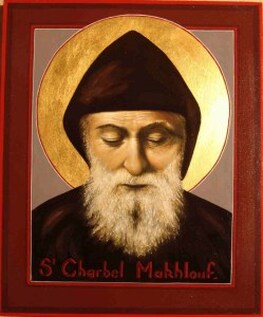 When Pope John Paul the Great was criticized for canonizing so many saints, he acknowledged that he did, indeed, deliberately raise more saints to the altar than any of his predecessors, because he believed we are living in a time that needs saints as witnesses more than ever. There have been books written about the people he canonized and beatified, and it is quite refreshing to read about many of them, because we can identify with people from our own era who lived a heroic faith life. As much as I like hagiography, the study of the saints, I have to admit that many of them, living in a different era, seem to be a bit untouchable, or even unreal. In many cases they became “kitsch,” entering so much into the piety of worldwide Catholicism that they became little more than statues. I am reminded of St. Therese of Lisieux who has rightly been called the greatest saint of modern times. Her statue seems to be in a majority of churches, but I’d like to know how many people in the pews actually know anything about her life.
Reflecting on the life of St. Charbel calls to mind a common frustration among my brother priests and me. On a regular basis, many people come into Mass late. Often they are so late they miss one or two of the readings. It is even more common for whole portions of the church to be empty after communion. While we are happy that these people at least come to Mass, think of the contrast between our experience and that of St. Charbel, who would spend hours in prayer both before and after receiving communion. We would never go to a movie late, or leave before the story was over. Why in the world, then, would we do that with the Divine Liturgy where heaven and earth meet? St. Alphonsus de’ Liguori (1696-1787), born 130 years before St. Charbel, believed that if we didn’t receive our first communion until we turned 100, we would still not have sufficient time to prepare. At another time, he said that once we receive communion, twelve angels surround us, worshiping what we just consumed. Obviously, that is not dogma, but it is food for thought if we are tempted to leave Mass early. The saints are always icons of having lived the Gospels, including those who seem to be so different from us. St. Charbel is a great example of this. I pray to him that through his intercession more people will grow in awe and reverence for Christ’s Eucharistic presence. —Father Rich
St. Charbel, pray for us! Blessed Pope Paul VI canonized Charbel Makhluf on October 9, 1977. |
Publishing DepartmentThe Family of Saint Sharbel has established a new Publishing Department. More
ProjectsLearn about our ongoing projects to help introduce Saint Sharbel and the Maronite spirituality to the English speaking communities. Check out our YouTube Channels
Saint Sharbel's Miracles & Healings .
Family of Saint Sharbel, USA.

Archives
July 2024
Categories
All
|

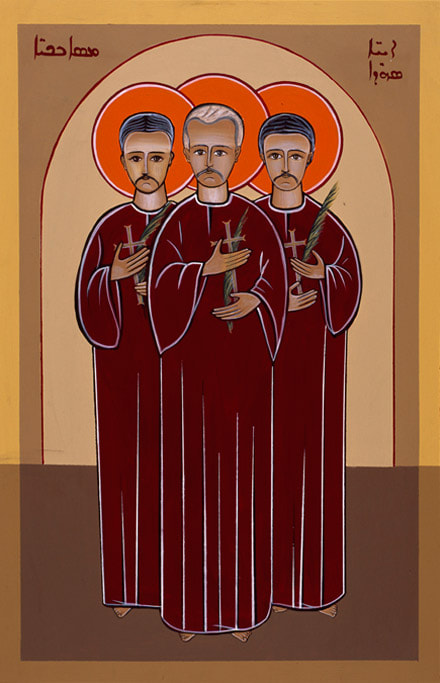
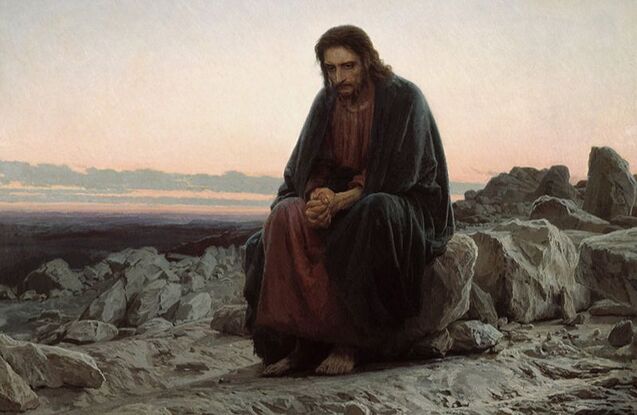
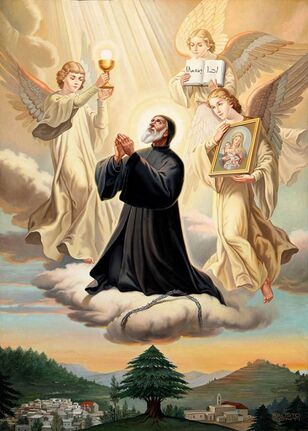
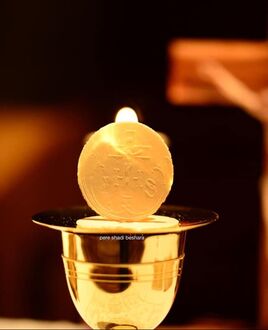

 RSS Feed
RSS Feed